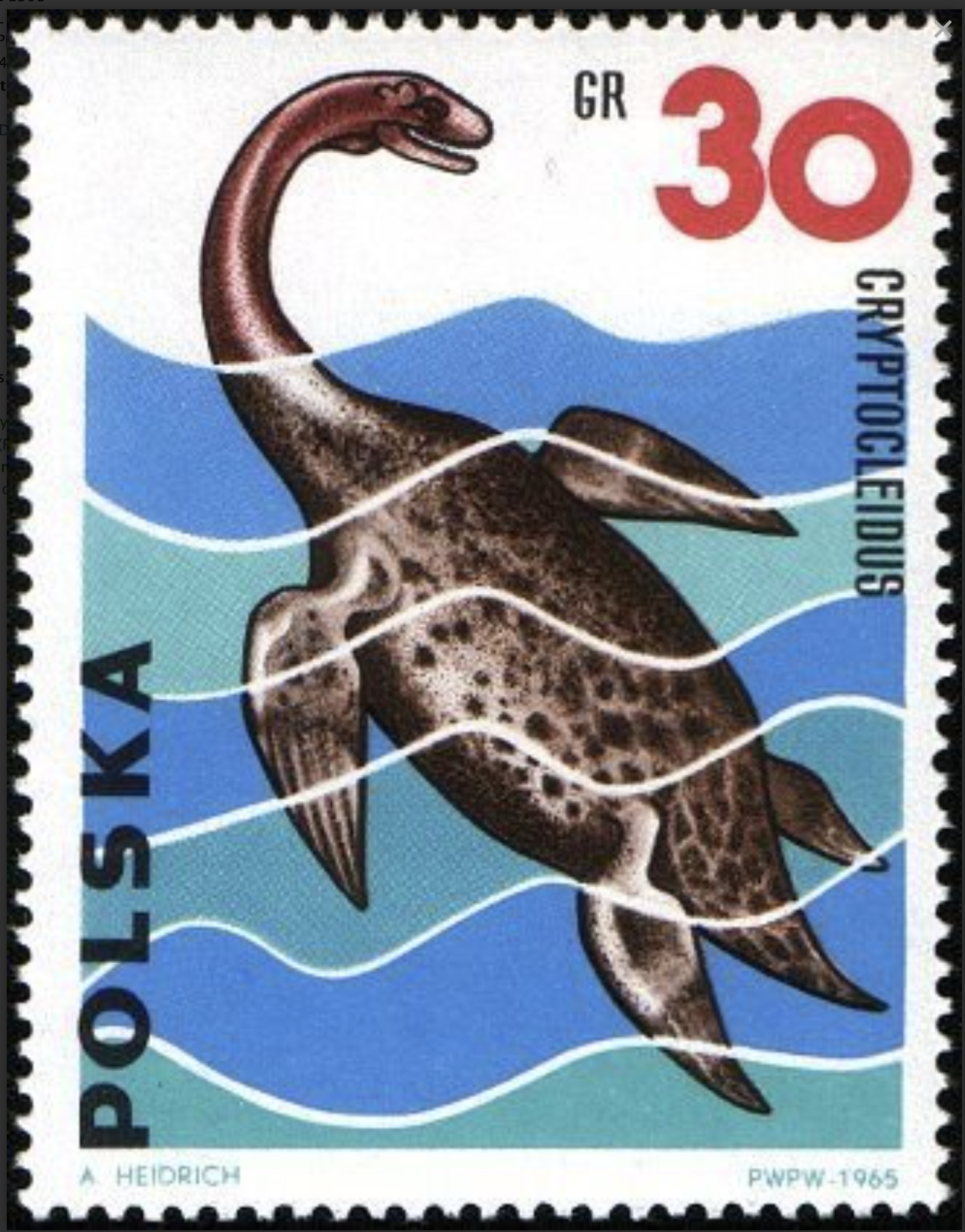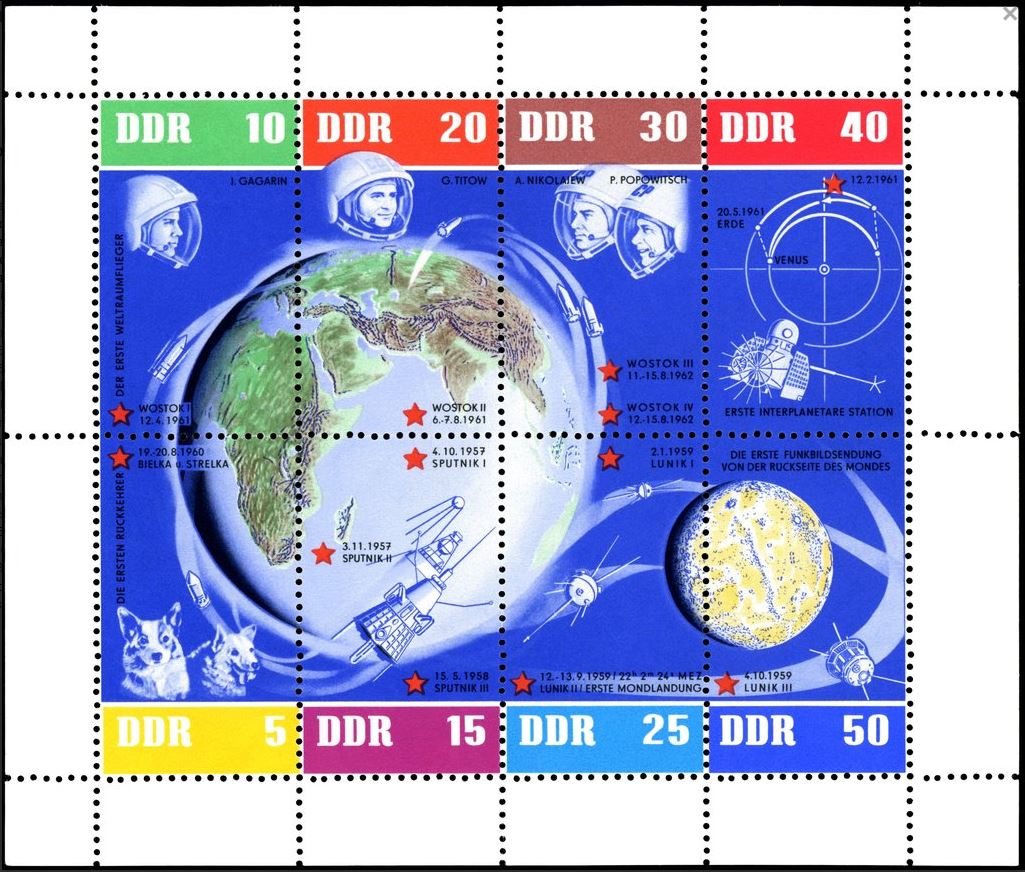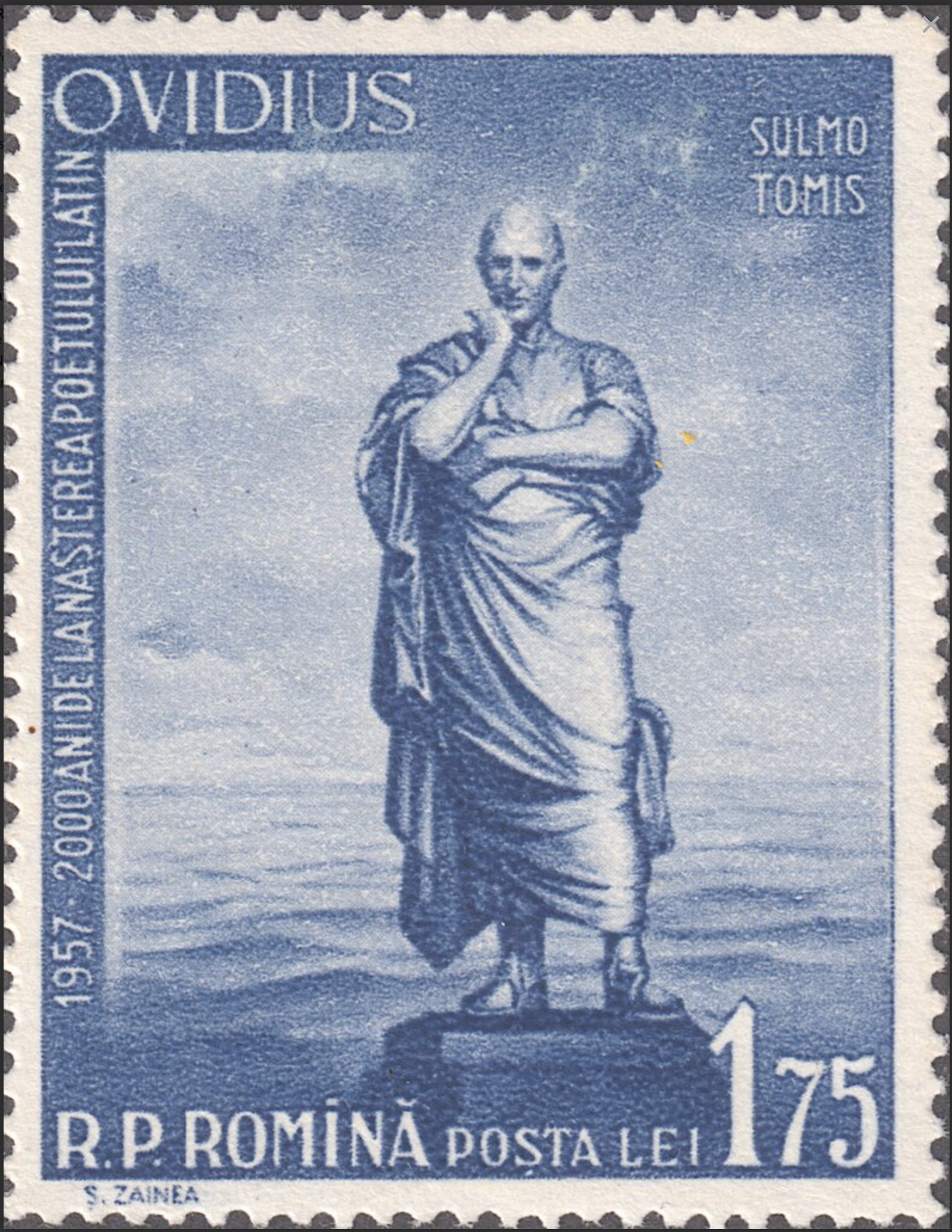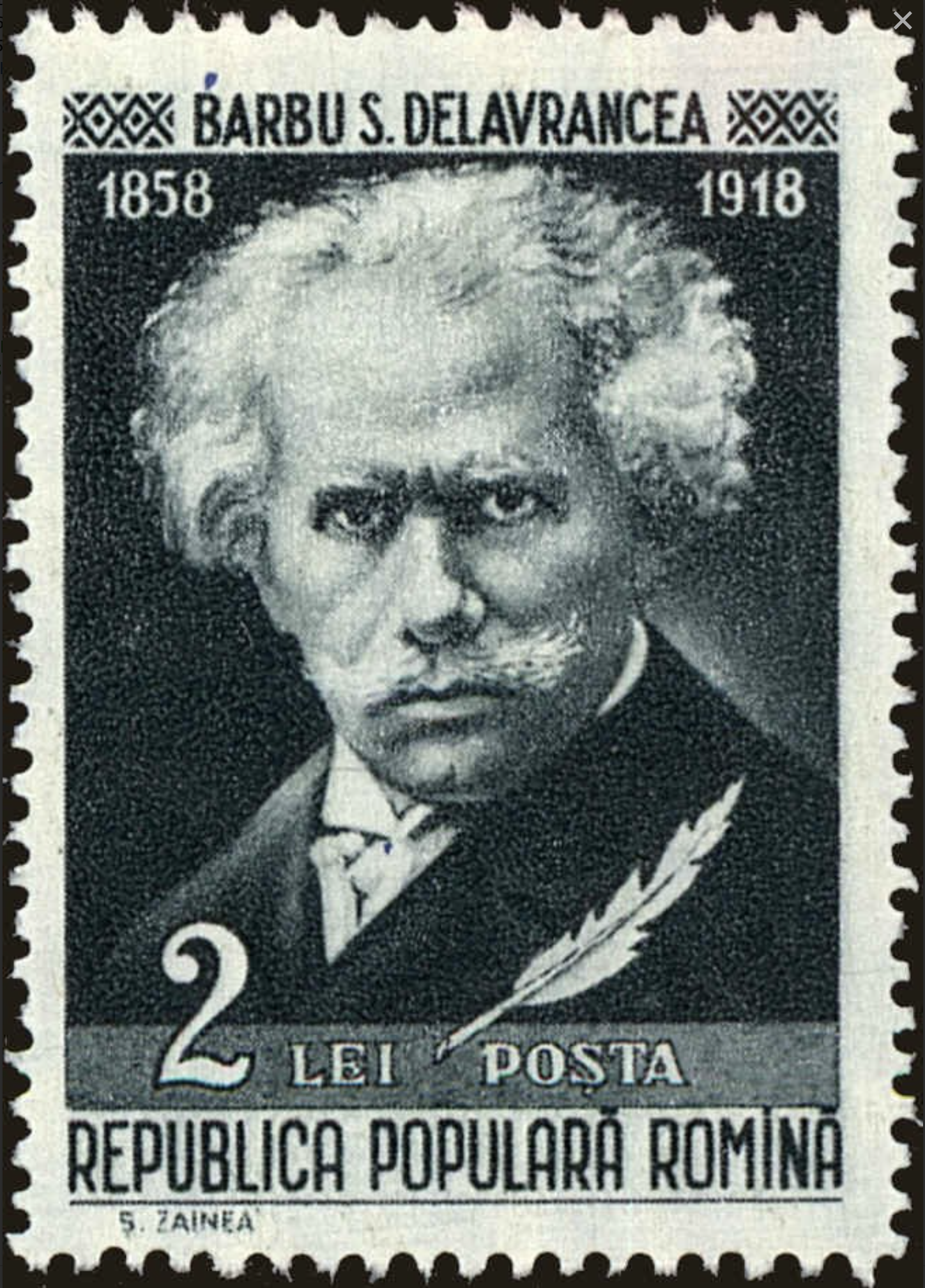Poland #1308 (1965) – Dinosaurs (Cryptocleidus)
Poland #1308 (1965) – Dinosaurs (Cryptocleidus)
Description
Poland #1308 (1965) – Dinosaurs (Cryptocleidus)
For more on Cryptocleidus’ visit https://omnimarte.com/2023/03/30/theres-a-cryptocleidus-on-my-stamp/
Cryptocleidus is an extinct genus of marine reptile that lived during the Late Jurassic period, approximately 150 million years ago. It is classified as a plesiosaur, which is a group of reptiles known for their long necks, flipper-like limbs, and aquatic lifestyles. Here are some key features and information about Cryptocleidus:
- Physical Characteristics:
- Cryptocleidus had a body structure typical of plesiosaurs, characterized by a compact body, long neck, and four flippers.
- The four flippers, which were adapted for swimming, resembled large, webbed paddles.
- The neck of Cryptocleidus was relatively short compared to some other plesiosaurs.
- Size:
- Cryptocleidus was a moderately sized plesiosaur, with adults reaching lengths of about 10 to 13 feet (3 to 4 meters).
- Habitat:
- These marine reptiles inhabited the seas and oceans of the Late Jurassic period, which had different geography and marine ecosystems compared to today.
- Diet:
- Cryptocleidus was likely a carnivorous predator that fed on fish and other aquatic prey.
- Its long neck and flexible body would have allowed it to strike out at prey with its sharp teeth.
- Swimming Abilities:
- Plesiosaurs, including Cryptocleidus, were well-adapted for swimming and probably used their flippers for propulsion, similar to how modern-day marine mammals like dolphins and seals use their flippers.
- Extinction:
- Cryptocleidus, like many other plesiosaurs, became extinct at the end of the Jurassic period. The exact cause of their extinction is still a subject of scientific debate, but it’s likely linked to changes in the marine environment, competition with other marine predators, or other factors.
- Fossils and Discovery:
- Fossils of Cryptocleidus have been found in various parts of the world, including Europe, particularly in the United Kingdom.
- These fossils have provided valuable insights into the anatomy, behavior, and ecology of plesiosaurs during the Late Jurassic period.
Cryptocleidus, like other plesiosaurs, is a fascinating and diverse group of prehistoric marine reptiles. Their unique adaptations for aquatic life, including their long necks and streamlined bodies, make them subjects of interest for paleontologists studying ancient marine ecosystems.
Ready to ship in 3-5 business days from United States (US)
Additional information
| Weight | 0.0149 lbs |
|---|---|
| Condition | |
| Country | |
| Scott Number | |
| Stamp Format | |
| Stamp Type | |
| Year of Issue |













